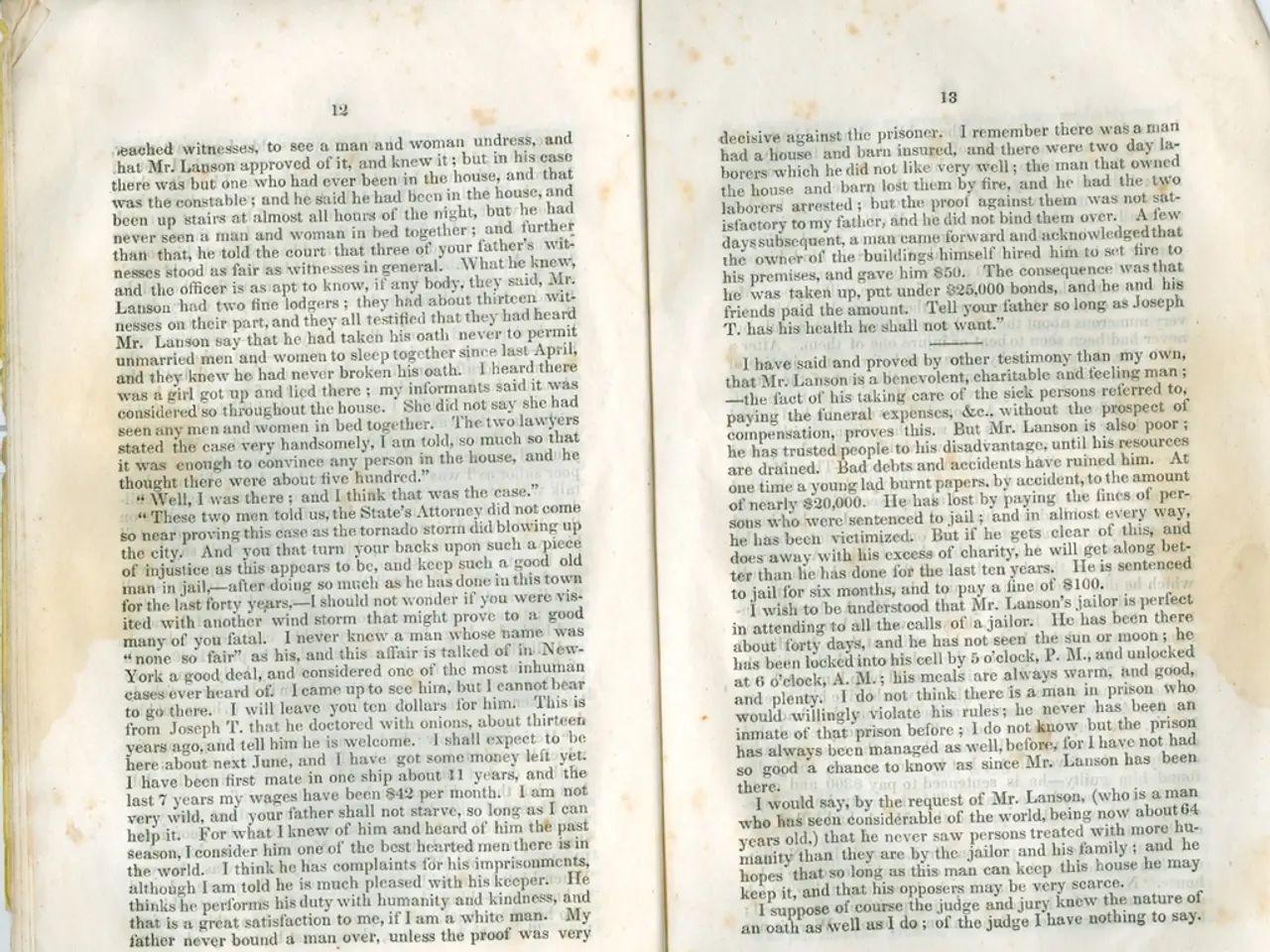Number of Pages in the Holy Quran: Investigating Variations and Publishing Specifications
The Quran, the sacred text of Islam, is a masterpiece of both spiritual and literary significance. Its structure is meticulously organised, with the division into Surahs (chapters) and Ayahs (verses) facilitating easy referencing and memorisation. But have you ever wondered why different editions of the Quran have varying page counts?
The number of pages in a Quran can be influenced by several key factors, including calligraphy style, font size, margin width, and printing standards.
Calligraphy style plays a significant role in determining the page count. Scripts like Kufic, Naskh, Thuluth, and others differ in character shape, size, and spacing. More ornate or larger scripts can take more space per word or line, increasing the page count. For example, the Kufic script features angled characters that can require more vertical space, whereas Naskh is more compact and rounded.
Font size also impacts the page count. Larger font sizes mean fewer words per line and fewer lines per page, which increases the total number of pages. The opposite is true for smaller fonts. This applies both in traditional manuscripts where each letter is hand-drawn, and in printed editions where font size is adjustable.
Margin width is another crucial factor. Wider margins reduce the usable text space on a page, decreasing the number of words and lines per page, thus increasing total page count. Manuscripts and printed Qurans vary in margin width based on aesthetic and functional choices, such as room for decoration or ease of reading.
Printing standards and layout also significantly affect the page count. The number of lines per page, line height, spacing, and page size directly impact how much text fits on each page. For instance, in the Codex Mashhad, the number of lines per page can range from 20 to 25, with relatively large page sizes allowing for more text per page and thereby fewer pages overall. Modern printed Qurans might standardise line counts, font sizes, and page dimensions differently, altering total page count.
The most widely recognised version of the Quran typically consists of approximately 604 pages, referred to as the Ottoman script or Medina script standard. However, smaller pocket-sized Qurans have a reduced page count due to smaller font sizes and condensed layouts.
Font size is another determinant of page count, with larger fonts requiring more pages. Some digital Qurans emulate the 604-page layout to maintain familiarity for readers accustomed to the traditional format. Translations of the Quran can significantly affect the page count due to differences in word lengths and sentence structures compared to Arabic.
Digital Qurans do not have a physical page count, offering greater flexibility regarding font size and display settings. However, they still maintain the Surah and Ayah numbers, ensuring consistency despite variations in page count.
The Quran is divided into 30 equal parts, known as Juz' (plural: Ajza'). The size of margins around the text significantly impacts the amount of text that can fit on a single page, affecting the total page count. Different publishing houses may adopt slightly different printing standards, which can also affect the page count.
In conclusion, the variations in calligraphy style, font size, margin width, and printing standards can significantly affect the page count in different Quran editions. Editions with larger calligraphic scripts, bigger fonts, wider margins, or looser line spacing will generally have more pages, whereas those with compact fonts, tighter layouts, and narrower margins will have fewer pages. These variations explain why identical text across different Quran editions has differing page counts and layouts.
Books about the Quran often discuss the factors that influence its page count, such as calligraphy style, font size, margin width, and printing standards.
For instance, the Kufic script, with its angled characters and more vertical space, tends to result in a higher page count compared to the more compact and rounded Naskh script.





